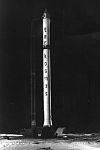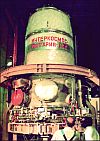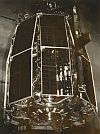HISTORY
The first scientific studies in the Department were related to the measurement of ion density, electron density and temperature on the satellites INTERCOSMOS 2, 8, 12 and 19.
The Space Physics Department marked an entirely new stage in its development by its participation in the INTERCOSMOS BULGARIA - 1300 project, intended for the study of the magnetospheric-ionospheric relations. Members of the team participated in the design and manufacture of devices for the measurement of energetic electron and proton flows, the quasiconstant electric field and the lowfrequency electromagnetic field, the density and drift of the plasma ion component, the ion density, the electron density and temperature, the quasiconstant magnetic field and the flows of energetic ions.
Members of the team participated in scientic programs for the first and second bulgarian astronauts.
The major results obtained concerned the structure and dynamics of the midlatitude drop in density and their relationship to other parameters of ionospheric plasma; the large-scale drift structure and the electrostatic fields at high latitudes; the physical processes in the region of the Auroral arcs; the dynamics of the sub-Auroral drift; the relationships between electrostatic and electromagnetic fields and strong earthquakes.
The Space Physics Department is supplied with an Information Provision Group, which main purpose is to develop methods, algorythms, and programs for processing of experimental data and perform corresponding trajectory computations.
The devices designed for the satellite INTERCOSMOS BULGARIA - 1300 provided the grounds for a series of new devices for the experiments: INTERCOSMOS 24-AKTIV, INTERCOSMOS 25-APEX, PHOBOS, INTERBALL AC, and INTERBALL VC. These devices were made in wide cooperation with scientists from Russia, Czechia, Poland and France.
|



